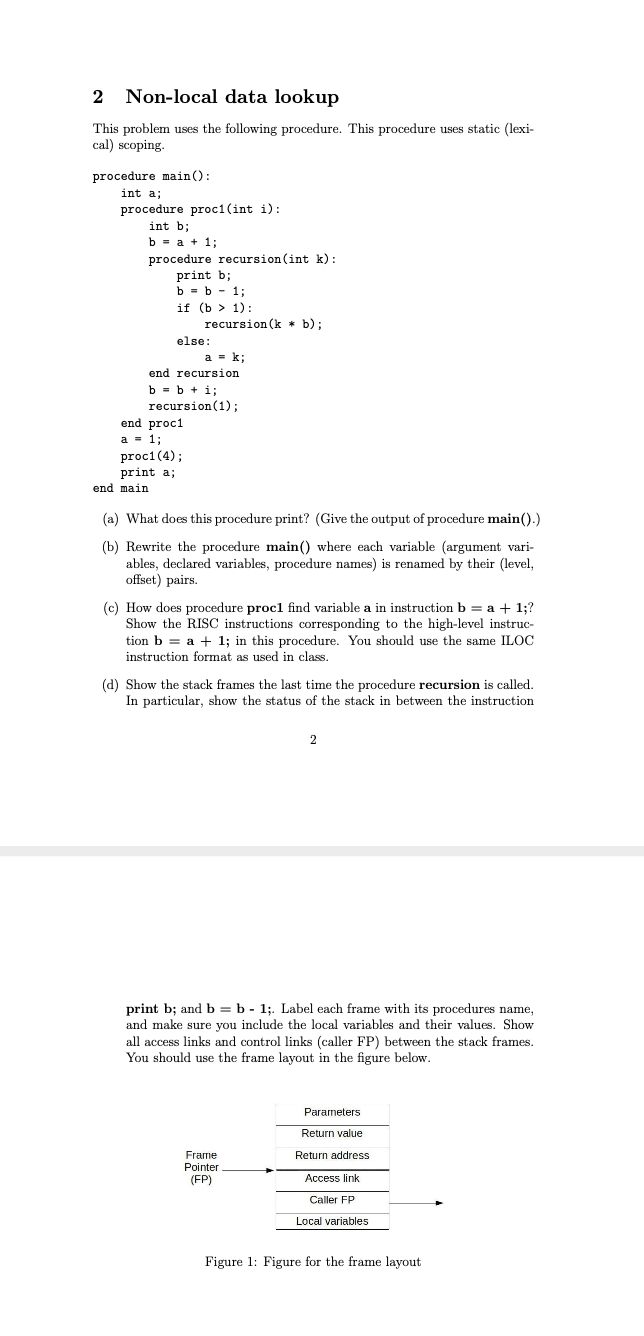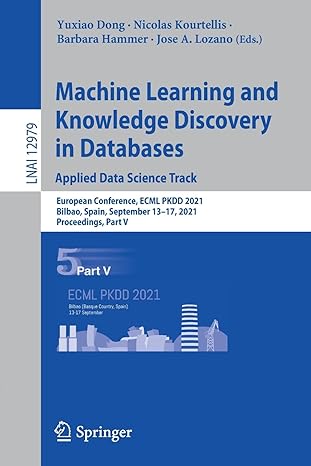
2 Non-local data lookup This problem uses the following procedure. This procedure uses static (lexi- cal) scoping procedure main(): int a; procedure proci(int i): int b; b = a + 1; procedure recursion(int k): print b; b = b - 1; if (b > 1): recursion(k * b); else: end recursion b = b + i; recursion(1); end proci a = 1; proci(4); print a; end main (a) What does this procedure print? (Give the output of procedure main().) (b) Rewrite the procedure main() where each variable (argument vari- ables, declared variables, procedure names) is renamed by their level, offset) pairs. (c) How does procedure procl find variable a in instruction b = a + 1;? Show the RISC instructions corresponding to the high-level instruc- tion b = a + 1; in this procedure. You should use the same ILOC instruction format as used in class. (d) Show the stack frames the last time the procedure recursion is called. In particular, show the status of the stack in between the instruction print b; and b = b - 1;. Label each frame with its procedures name, and make sure you include the local variables and their values. Show all access links and control links (caller FP) between the stack frames. You should use the frame layout in the figure below. Parameters Return value Return address Frame Pointer (FP) Access link Caller FP Local variables Figure 1: Figure for the frame layout 2 Non-local data lookup This problem uses the following procedure. This procedure uses static (lexi- cal) scoping procedure main(): int a; procedure proci(int i): int b; b = a + 1; procedure recursion(int k): print b; b = b - 1; if (b > 1): recursion(k * b); else: end recursion b = b + i; recursion(1); end proci a = 1; proci(4); print a; end main (a) What does this procedure print? (Give the output of procedure main().) (b) Rewrite the procedure main() where each variable (argument vari- ables, declared variables, procedure names) is renamed by their level, offset) pairs. (c) How does procedure procl find variable a in instruction b = a + 1;? Show the RISC instructions corresponding to the high-level instruc- tion b = a + 1; in this procedure. You should use the same ILOC instruction format as used in class. (d) Show the stack frames the last time the procedure recursion is called. In particular, show the status of the stack in between the instruction print b; and b = b - 1;. Label each frame with its procedures name, and make sure you include the local variables and their values. Show all access links and control links (caller FP) between the stack frames. You should use the frame layout in the figure below. Parameters Return value Return address Frame Pointer (FP) Access link Caller FP Local variables Figure 1: Figure for the frame layout







